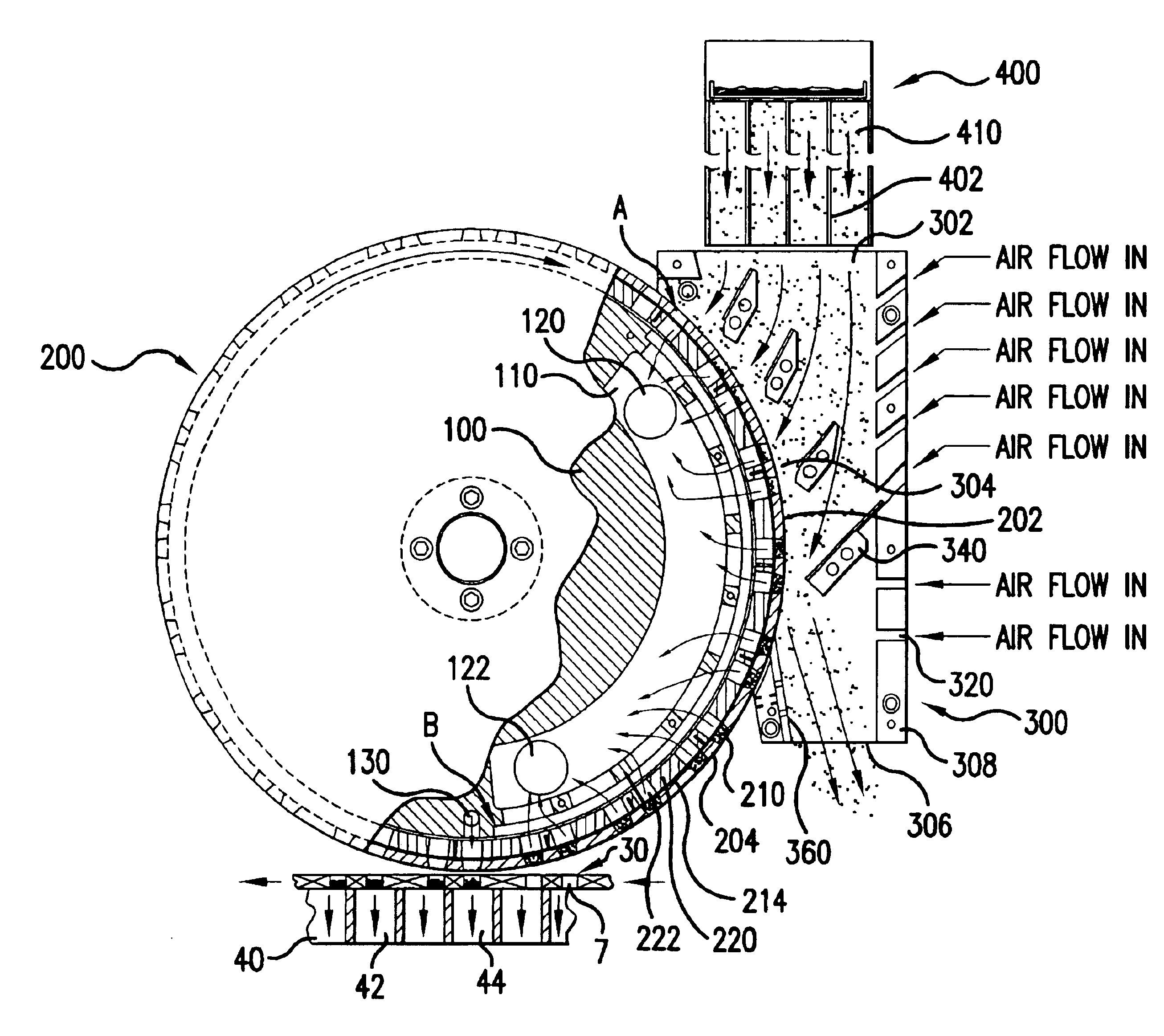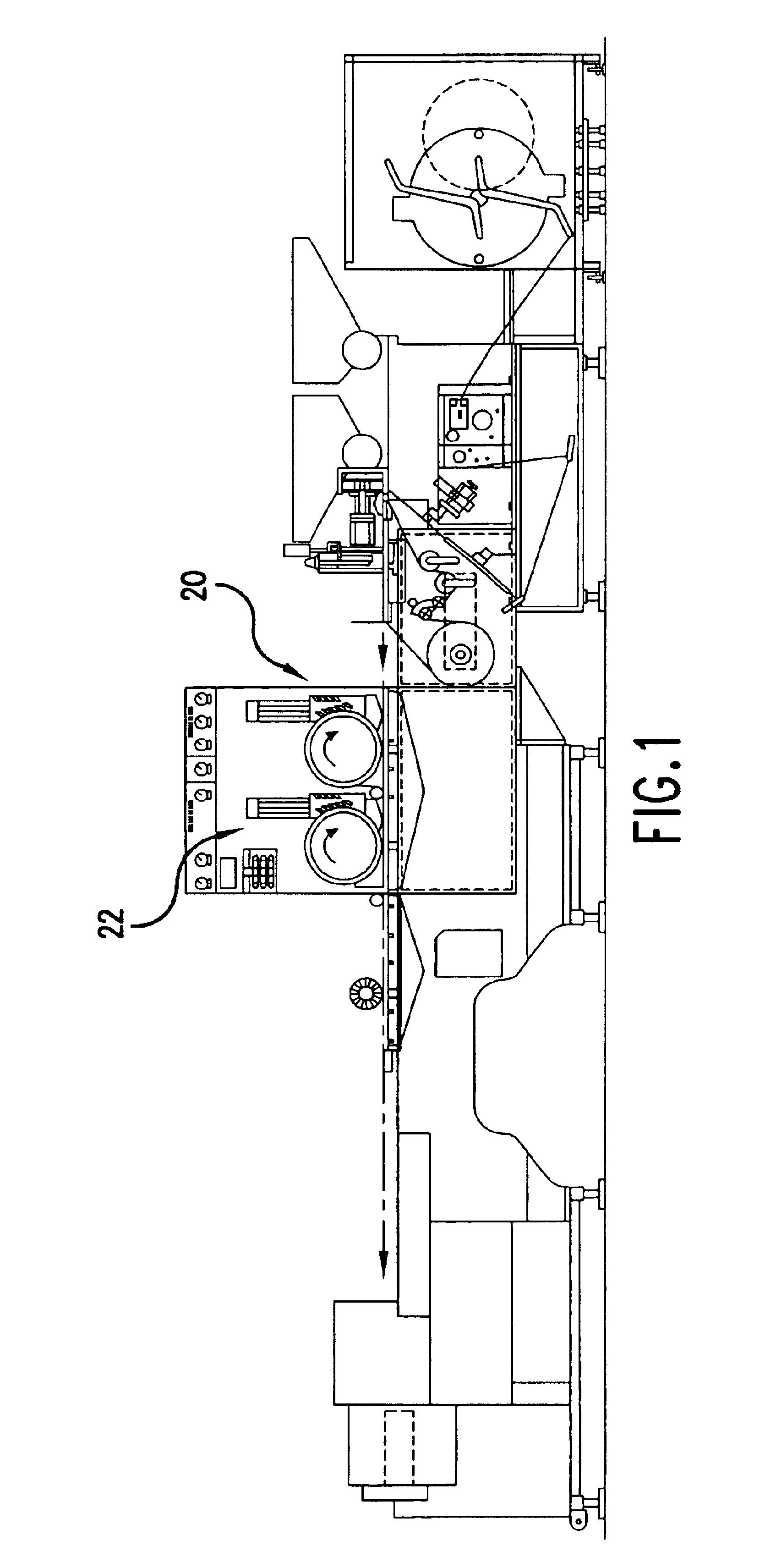Apparatus and method for filling cavities with metered amounts of granular particles
a technology of granular particles and apparatus, which is applied in the direction of liquid handling, packaging goods, transportation and packaging, etc., can solve the problems of increasing the cost of the system, difficult to achieve 100 percent filling of the cavities in the article, and difficulty in achieving consistent accurate filling of the desired cavities with granular particles, etc., to achieve the effect of accurate filling and faster transfer of particles
- Summary
- Abstract
- Description
- Claims
- Application Information
AI Technical Summary
Benefits of technology
Problems solved by technology
Method used
Image
Examples
Embodiment Construction
The invention provides a system useful for transferring accurately metered volumes of particles to cavities in an article or articles being produced at a high rate during mass production. The system includes a single wheel that rotates around a central stationary drum defining at least one vacuum chamber. A series of pockets are defined along an outer circumferential surface of the rotating wheel between the outer periphery of the wheel and a perforated band or screen that is clamped against the inner periphery of the wheel, to both accurately meter and transfer predetermined amounts of granules or particles into cavities of one or more articles. Accurate metering and transfer of particles is achieved through the use of a combination of features that include a filling system that uses gravitational acceleration of the particles and cross air flow to achieve rapid filling of the pockets in the rotating vacuum wheel, and a vacuum rail for transporting the article or articles that is u...
PUM
| Property | Measurement | Unit |
|---|---|---|
| velocity | aaaaa | aaaaa |
| distance | aaaaa | aaaaa |
| vacuum | aaaaa | aaaaa |
Abstract
Description
Claims
Application Information
 Login to View More
Login to View More - R&D
- Intellectual Property
- Life Sciences
- Materials
- Tech Scout
- Unparalleled Data Quality
- Higher Quality Content
- 60% Fewer Hallucinations
Browse by: Latest US Patents, China's latest patents, Technical Efficacy Thesaurus, Application Domain, Technology Topic, Popular Technical Reports.
© 2025 PatSnap. All rights reserved.Legal|Privacy policy|Modern Slavery Act Transparency Statement|Sitemap|About US| Contact US: help@patsnap.com



